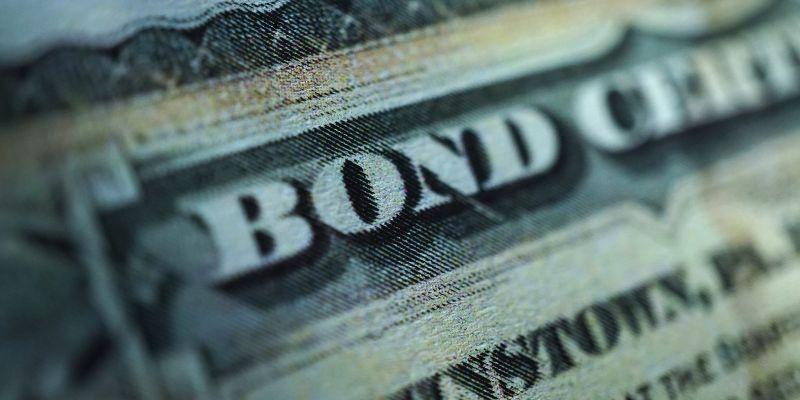People who have owned bonds know that their prices can go up and down, even if investing in them may appear safe and easy. To make informed financial decisions, you need to know why bond prices go up and down. Bonds are usually thought of as low-risk investments, so many new investors are surprised when their bonds lose value.
There are a few key factors that affect how much money an investor can make and how much risk they take, which in turn affect the movement of bond prices. Investors can use this information to figure out whether to purchase or sell bonds and how to prepare for different market scenarios. We will explain in clear examples so that both new and seasoned investors may comprehend and make smart decisions.

3 Key Reasons Why Bond Prices Move Up and Down
Below are the three main reasons that cause bond prices to rise or fall, explained clearly and simply.
Interest Rates
The most significant thing that affects bond prices is interest rates. When interest rates go up, new bonds pay more interest, which makes older bonds with lower yields less desirable. People who own these older bonds often sell them to get better returns, which lowers their prices. When interest rates go down, on the other hand, older bonds with higher yields become more appealing since they pay more than new bonds. It makes people want to buy these older bonds, which makes their prices go up. Bond values can fluctuate significantly even with slight changes in interest rates. Changes in interest rates have less of an effect on short-term bonds than they do on long-term bonds. Interest rates are directly affected by decisions made by central banks and their policies. Investors pay close attention to these decisions. Investors may protect their money and make more money in different market conditions by knowing how interest rates affect bond prices.
Inflation Expectations
Inflation is another important thing that impacts bond prices since it makes the money that investors make from bonds worth less over time. When investors think inflation will go up, they want greater yields to make up for the loss of buying power. It makes the price of existing bonds go down. On the other hand, if inflation is predicted to stay low or reduce, older bonds with fixed interest rates become more appealing because they pay more than new bonds. Expectations about inflation affect both government and corporate bonds, and even slight changes can modify how investors act. When central banks make comments about inflation targets, bond prices can also change swiftly. Investors can see trends coming and change their portfolios accordingly by keeping an eye on economic indicators like manufacturing costs and consumer pricing.
Credit Risk and Issuer Changes
Credit risk is the probability that the issuer of a bond won't pay the interest or the principal back. Bond prices go down when investors think there is a greater chance of default because they want higher yields as compensation. Bond prices are normally higher for companies or governments with good finances and excellent credit ratings. On the other hand, downgrades by rating agencies can cause prices to drop quickly. Even suspicions about money problems can make bond values fluctuate temporarily. Corporate bonds are usually more affected by credit risk than government bonds. Before buying bonds, investors should look at the issuer's stability, financial statements, and the state of the market. Credit risk is quite critical for long-term bonds because it can take years for problems to show themselves.

Additional Factors That Can Influence Bond Prices
Other things can affect bond prices besides interest rates, inflation predictions, and credit risk. Short-term price changes are mostly caused by supply and demand in the market. Prices go up when more people want to buy bonds than sell them, and prices go down when more people want to sell them than buy them. Prices can also change because of market mood, which can be caused by investor optimism or fear.
When there are problems in the world, including political instability, natural disasters, or economic crises, government and corporate bonds become more unstable. Currency exchange rates can impact the returns on bonds issued in foreign currencies. Pricing is affected by liquidity, which is the ease of buying or selling a bond. It is especially true for bonds that aren't exchanged very often. Even tiny changes in the market can cause prices to alter quickly.
How Investors Can Respond to Bond Price Changes
There are several things investors may do to keep bond price changes from hurting them. It lowers the risk of spreading your bonds out over diverse issuers, types, and maturities. Short-term bonds don't usually react as much to changes in interest rates, but long-term bonds pay more interest and can have bigger price movements. Investors can predict changes in interest rates and market conditions by keeping an eye on economic news, such as decisions made by central banks, reports on inflation, and global events.
Another way to lower risk is to use bond funds, which distribute risk over numerous bonds and lessen the effects of difficulties with any one issuer. Regularly checking and changing a bond portfolio ensures it aligns with your financial goals. You also need to be patient because bond prices change every day. Investors may make better choices and feel less stressed about bond investing if they know the three main reasons why prices move and keep an eye on other issues.
Conclusion:
Interest rates, inflation expectations, and credit risk are the key things that make bond prices go up and down. Changes in interest rates can make older bonds more or less valuable. Inflation, on the other hand, impacts the real return that investors get. When issuers have financial troubles or get downgraded, credit risk affects prices. Other things that can affect prices are supply and demand, market mood, world events, and liquidity. Investors can make better decisions, lower their risks, and preserve their money by knowing these important reasons.












